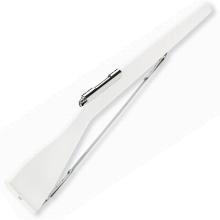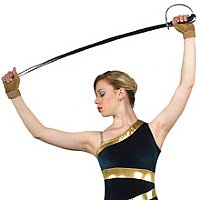What is Winterguard/Colorguard?
Winter guard is an indoor color guard sport derived from military ceremonies or veterans organizations ceremonies. Unlike traditional color guard, winter guard is performed indoors, usually in a gymnasium or an indoor arena. Performances make use of recorded music rather than a live band or orchestra. Winter guard was invented in the United States, where to date is still by far the most predominant scene for the sport. Winter guard ensembles commonly perform at judged competitions officiated by local and regional associations using criteria developed by Winter Guard International.
A winter guard generally consists of performing members under the direction of an instructional staff. The staff of a winter guard team ("the guard") are drawn from many different specialties, which sometimes overlap: there are equipment instructors (sometimes one for the unit, sometimes broken out into the individual sections), dance instructors, and drill instructors. The equipment instructors create the choreography performed with equipment and teach it to the guard. The dance instructors create and teach the movement choreography in the show. The drill instructors focus on the position of the guard members relative to one another and to the boundaries of the performance area, in addition to where each member goes at which specific time during the performance. In some cases, all of these roles are fulfilled by one sole director.
A winter guard team usually has a captain, who is one of the performing members who leads and represents the guard. The captain may assume minor administrative duties and lead the team when instructors are not available. The captain is also the representative of the guard during awards ceremonies or retreat.
Three primary types of equipment are used in winter guard: flags, rifles, and sabres (other items can be used to demonstrate artistic effects.) Such equipment is used in shows to demonstrate a team's technical ability. Rubber tape, such as electrical tape, is often used to cover the equipment and give it a uniform appearance and protect it from damage during the activity.
 These flags are often incorporated into the artistic element of the performance, even though they are not practical for tossing or spinning, due to the weight and length of the silk. Other flags may range from 5 feet to 7 feet depending upon the intended effect of the piece of equipment. Longer flags are not practical to spin or toss but serve more as holders for large pieces of material.
These flags are often incorporated into the artistic element of the performance, even though they are not practical for tossing or spinning, due to the weight and length of the silk. Other flags may range from 5 feet to 7 feet depending upon the intended effect of the piece of equipment. Longer flags are not practical to spin or toss but serve more as holders for large pieces of material.
 The body of the rifle is the middle section and the majority of the mass of the rifle.
The strap, a long leather strap that reaches from the butt end of the rifle to about two-thirds of the way to the nose of the rifle. The strap has functional and visual purposes, and it is also used to produce a snapping sound. The strap is similar to a firearm's sling.
The swivel or clip is the metal piece that attaches the strap to the body of the rifle. This is the most common location for left-hand placement when executing a regular left-handed toss.
The final part of the rifle is the butt, the heavier, back end of the rifle.
The body of the rifle is the middle section and the majority of the mass of the rifle.
The strap, a long leather strap that reaches from the butt end of the rifle to about two-thirds of the way to the nose of the rifle. The strap has functional and visual purposes, and it is also used to produce a snapping sound. The strap is similar to a firearm's sling.
The swivel or clip is the metal piece that attaches the strap to the body of the rifle. This is the most common location for left-hand placement when executing a regular left-handed toss.
The final part of the rifle is the butt, the heavier, back end of the rifle.
 Sabres have two main parts: the blade and the hilt. The blade has a pointed but dull end, and the length of the blade is dull as well. Some winter guard team members wrap their sabres in electrical tape, as they do with rifles. As with rifles, a piece of black or non-white tape placed near the center of rotation is used as a "spotter", making it easier to locate the fast-moving blade while it is rotating in the air. Sabres are used primarily by more advanced guard members.
Sabres have two main parts: the blade and the hilt. The blade has a pointed but dull end, and the length of the blade is dull as well. Some winter guard team members wrap their sabres in electrical tape, as they do with rifles. As with rifles, a piece of black or non-white tape placed near the center of rotation is used as a "spotter", making it easier to locate the fast-moving blade while it is rotating in the air. Sabres are used primarily by more advanced guard members.